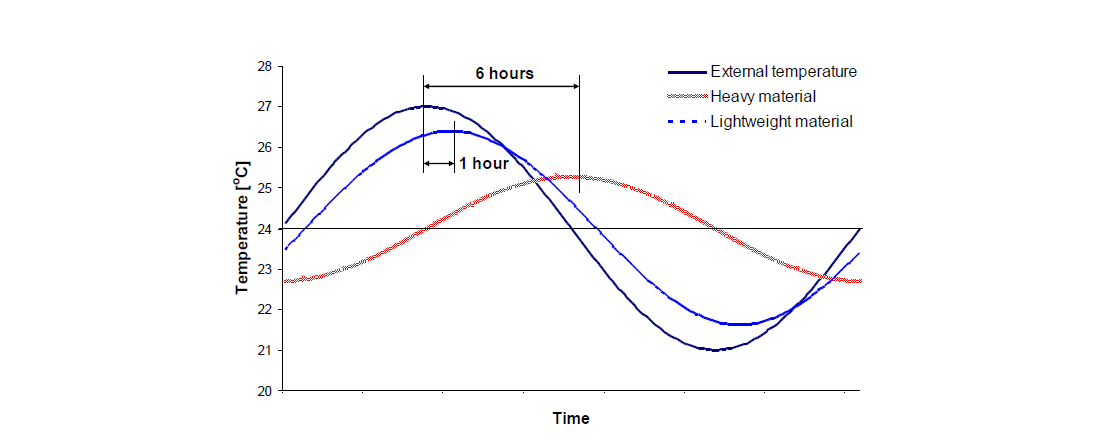1 Research Fellow, The University of Newcastle, Priority Research Centre For Energy, NSW, 2308, Australia dariusz.alterman@newcastle.edu.au
2 Professor Emeritus, The University of Newcastle, Priority Research Centre For Energy, NSW, 2308, Australia adrian.page@newcastle.edu.au
3 Professor, The University of Newcastle, Priority Research Centre For Energy, NSW, 2308, Australia behdad.moghtaderi@newcastle.edu.au
4 Undergraduate Student, The University of Newcastle, Discipline of Civil Engineering , NSW, 2308, Australia jared.robinson@uon.edu.au
ABSTRACT
This paper describes an experimental investigation of the heat flow mechanisms for plain and insulated heavy walling systems exposed to dynamic heating and cooling cycles. Current Australian housing thermal design practice emphasizes the importance of thermal resistance (R-value) and thermal conductivity. However, these are only steady-state parameters and inadequate as the sole descriptors of the thermal performance of walling systems under changing conditions throughout a day, month or seasons.
A novel method for the testing of building materials under dynamic conditions is under development at the University of Newcastle to overcome a shortage of data on the performance of various materials when exposed to dynamic heating and cooling cycles, and in particular, to obtain the optimum combination of thermal resistance and thermal mass in a walling system. This paper describes preliminary tests performed on plain and insulated heavy walling panels to provide more realistic data on the response of wall components when exposed to typical temperature fluctuations. For convenience in the initial tests, plain concrete panels with varying degrees of insulation were used as an extreme example of heavy walling. These are being followed by a series of tests on masonry walls with varying combinations of thermal resistance and thermal mass. The three construction combinations tested as part of the preliminary study were a plain concrete panel, and a concrete panel with internal and then external insulation. A modified Guarded Hot Box Apparatus was used to expose the three wall configurations to sinusoidal temperature cycles, representing a typical moderate Australian climate, with temperature changes and heat flux profiles monitored across each wall. The findings directly relate to masonry construction and indicate that energy demands for moderate weather conditions are more efficient if an appropriate combination of both thermal mass and thermal resistance is used, especially if passive solar design principles can be utilized.
KEYWORDS: thermal performance, thermal mass, thermal resistance, passive solar design principles, housing
377.pdf



